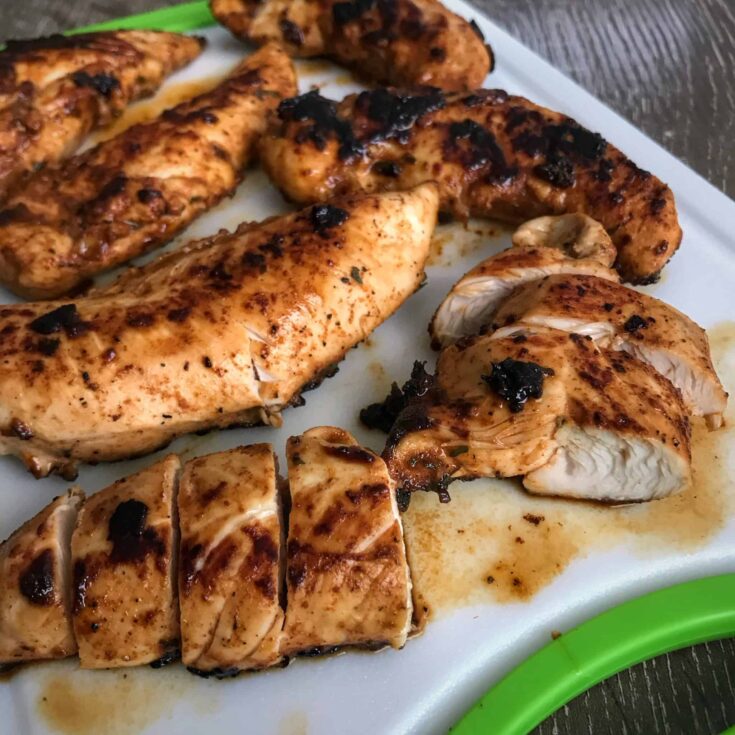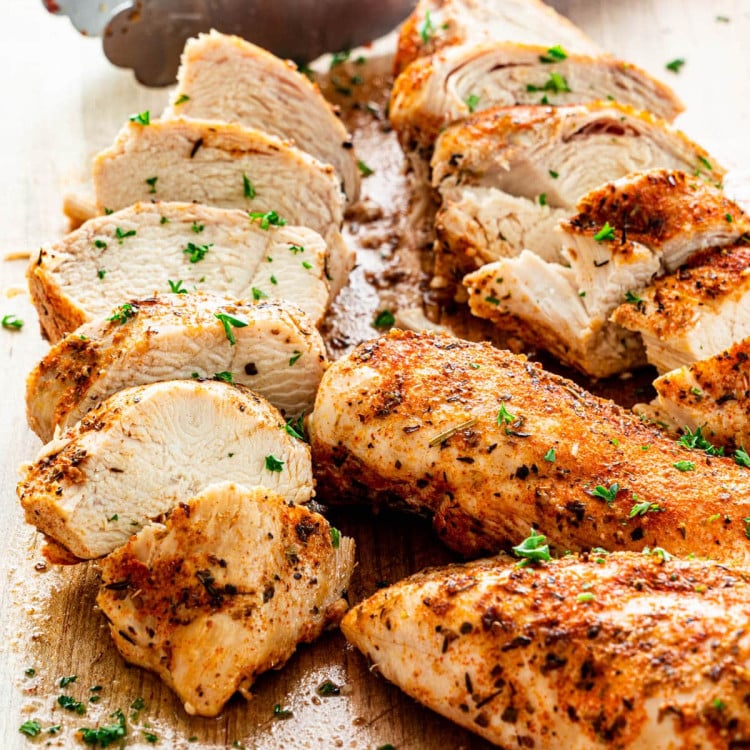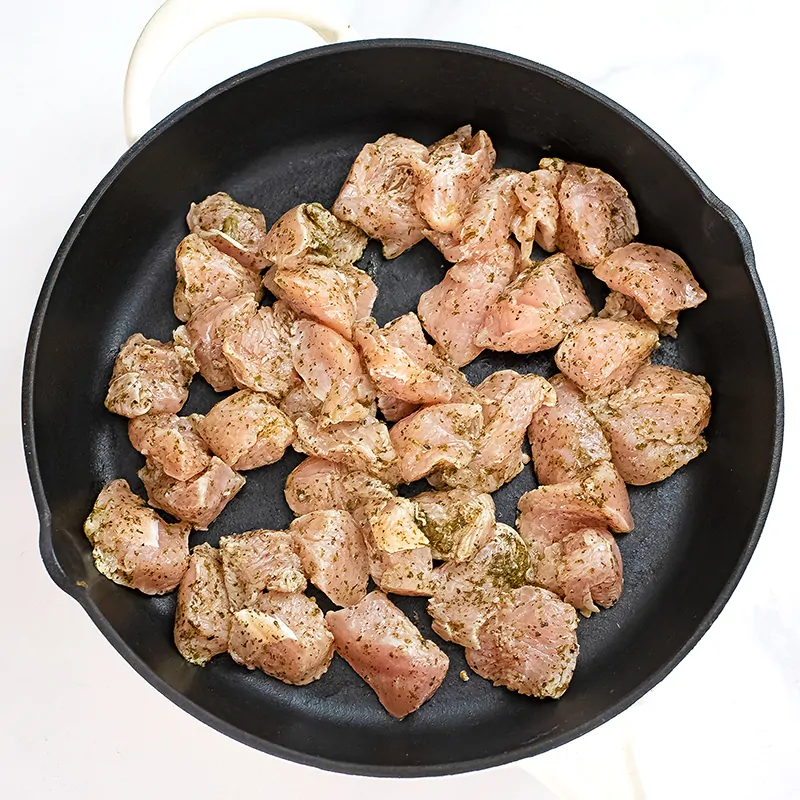Delicious and Juicy: Cooking Chicken Breast on the Stovetop
I. Preparing the Chicken Breast

A. Selecting the chicken breast
When it comes to cooking chicken breast, the quality of the meat is essential. Opt for chicken breast that is fresh, free of any unpleasant odors, and has a pinkish-white color. Look for chicken breast that is plump and moist, indicating that it is still tender and juicy.
B. Seasoning and marinating the chicken breast
Seasoning and marinating the chicken breast is crucial for enhancing its flavor and juiciness. A simple seasoning of salt and pepper can work wonders, but feel free to experiment with your favorite herbs and spices. A marinade consisting of olive oil, garlic, and herbs like rosemary and thyme can further infuse the chicken breast with delicious flavors.
C. Bringing the chicken breast to room temperature
Before cooking, allow the seasoned or marinated chicken breast to come to room temperature. This ensures that the chicken cooks evenly throughout and prevents the meat from being tough and dry.
II. Searing the Chicken Breast
A. Preparing the pan
To start the cooking process, it’s important to prepare the pan. Use a heavy-bottomed skillet or frying pan, as this type of cookware helps to conduct heat evenly. Preheat the pan over medium-high heat and add a small amount of oil to prevent the chicken breast from sticking.
B. Searing the chicken breast on high heat
Once the pan is sufficiently hot, carefully add the seasoned or marinated chicken breast to the pan. Searing the chicken breast over high heat creates a flavorful and caramelized crust on the outside while sealing in the juices.
C. Achieving a golden brown crust
Allow the chicken breast to sear without moving it around too much. This allows the surface to develop a beautiful golden brown crust. After a few minutes, carefully flip the chicken breast to sear the other side, ensuring an evenly browned exterior.
III. Cooking the Chicken Breast

A. Reducing heat and cooking through
After achieving a golden brown crust, it’s essential to reduce the heat to ensure that the chicken breast cooks through without burning the outer layer. This gradual cooking process allows the heat to penetrate the meat evenly, resulting in a juicy and tender texture.
B. Checking the internal temperature
To confirm that the chicken breast is thoroughly cooked, it is recommended to use a meat thermometer to check the internal temperature. The USDA advises that the internal temperature of chicken should reach 165°F (75°C) to ensure that it is safe to eat. This step helps to avoid undercooking or overcooking, ensuring that the chicken breast is perfectly done.
C. Ensuring juiciness and tenderness
To maintain the juiciness and tenderness of the chicken breast, it is essential to avoid overcooking. Removing the chicken breast from the heat just as it reaches the recommended internal temperature will prevent the meat from drying out, ensuring that every bite remains succulent and delicious.
IV. Adding Flavor and Moisture
When it comes to cooking chicken breast, one of the biggest challenges is keeping it flavorful and moist. Nobody wants to bite into a dry, bland piece of chicken! Fortunately, there are several techniques you can use to add flavor and moisture to your chicken breast. In this article, we’ll explore some of the best methods for achieving juicy, delicious chicken breast every time.
Adding Aromatics and Herbs
One of the simplest and most effective ways to add flavor to your chicken breast is by using aromatics and herbs. Aromatics such as onions, garlic, and ginger can add depth and complexity to your chicken breast, while herbs like thyme, rosemary, and parsley can infuse it with fresh, vibrant flavors. To incorporate these ingredients into your chicken breast, you can simply chop them up and mix them into a marinade or rub, or stuff them inside the chicken breast before cooking.
Basting the Chicken Breast
Basting is another great way to add moisture and flavor to your chicken breast. By regularly spooning or brushing a flavorful liquid over the chicken as it cooks, you can help keep it moist and infuse it with extra flavor. For example, you could use a mixture of melted butter, garlic, and herbs for a rich and savory basting liquid. Alternatively, you could use a tangy barbecue sauce or a sweet and spicy glaze to add a delicious finishing touch to your chicken breast.
Using Additional Liquids or Sauces
Finally, using additional liquids or sauces can also help add moisture and flavor to your chicken breast. For example, you could marinate your chicken breast in a mixture of citrus juice, soy sauce, and honey to infuse it with a sweet, tangy flavor, or you could braise it in a flavorful broth or wine-based sauce to keep it moist and tender. Additionally, serving your cooked chicken breast with a delicious sauce or gravy can add an extra layer of flavor and moisture to the dish.
V. Letting the Chicken Rest

A. Importance of resting
Allowing the cooked chicken breast to rest for a few minutes before serving is essential. This resting period allows the juices within the meat to redistribute, resulting in a more consistently juicy and flavorful chicken breast.
B. Allowing the juices to redistribute
By giving the chicken breast time to rest off the heat, the redistributed juices help to maintain the meat’s moisture and prevent it from drying out, ensuring a more enjoyable dining experience.
C. Maintaining juiciness and flavor
The resting period not only preserves the juiciness of the chicken breast but also allows the flavors to meld and intensify, creating a more harmonious and delectable eating experience.
As we come to the conclusion of cooking the perfect chicken breast on the stovetop, we’ve covered the essential steps to ensure a delicious and juicy outcome. Stay tuned for the final part of this blog, where we will explore serving and enjoying the beautifully cooked chicken breast!
VI. Serving and Enjoying
A. Slicing and plating the chicken breast
Once the chicken breast is perfectly cooked, it’s time to slice and plate it. Use a sharp knife to slice the chicken breast against the grain, which helps to ensure tenderness. Arrange the slices on a serving platter or individual plates in an appealing manner.
B. Pairing with complementary sides
Pairing the chicken breast with complementary sides can elevate the overall meal. Consider serving it with a refreshing green salad, roasted vegetables, or a side of buttery mashed potatoes. The sides should complement the flavors of the chicken while providing a balanced and delicious dining experience.
C. Garnishing for visual appeal
Garnishing the plated chicken breast can enhance its visual appeal and provide a hint of added flavor. Fresh herbs, such as parsley or thyme, can be sprinkled over the dish to add a pop of color. Additionally, a drizzle of olive oil or a squeeze of lemon juice can provide a finishing touch to the presentation.
As we conclude this journey of cooking the perfect chicken breast on the stovetop, we have explored the essential steps to achieve a delightful and delicious dish. By following the steps outlined in this blog, you can create a succulent and flavorful chicken breast, perfect for any occasion.
Remember, cooking is not just about preparing a meal; it’s about creating an experience to savor and enjoy. Whether it’s a casual weeknight dinner or a special gathering with loved ones, serving a perfectly cooked chicken breast is a wonderful way to bring people together over a delicious and satisfying meal.
